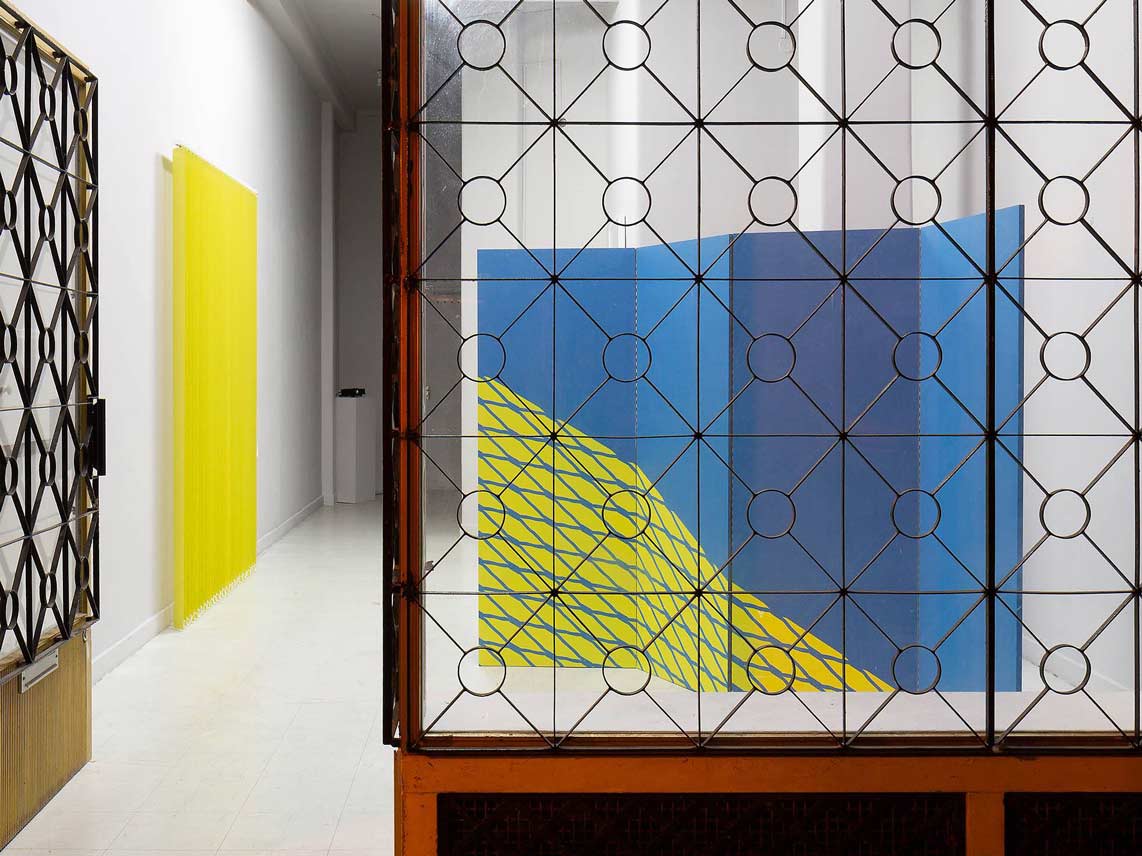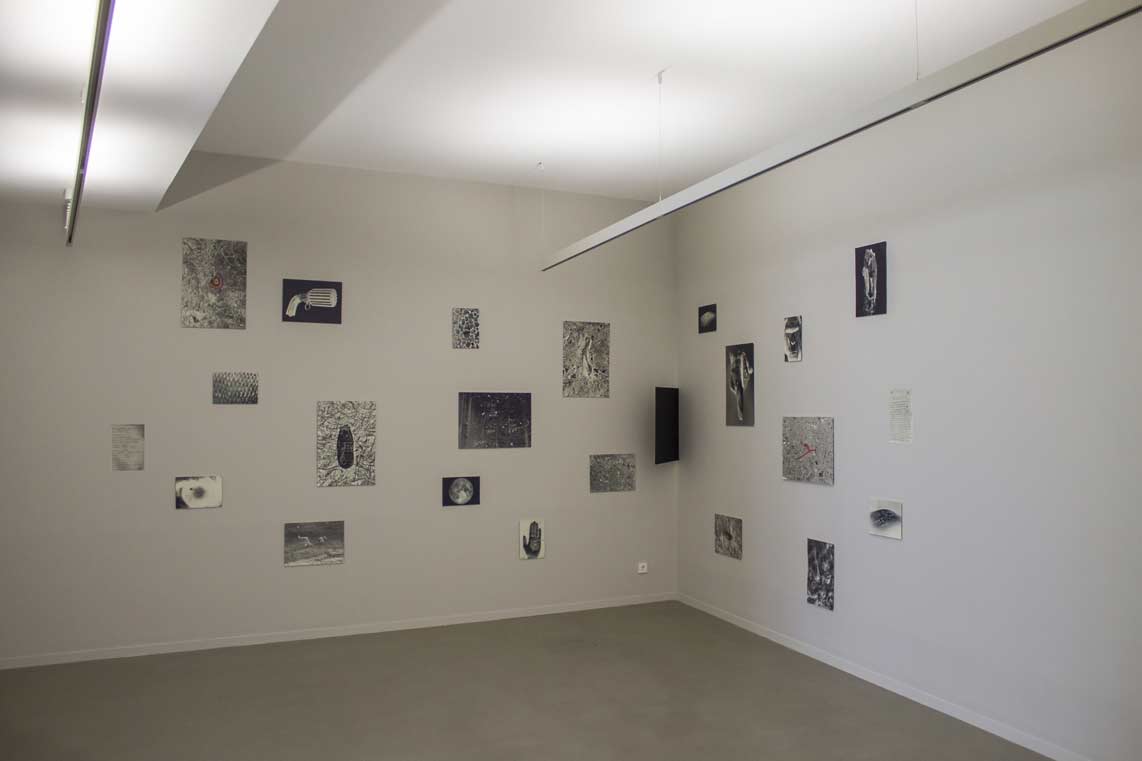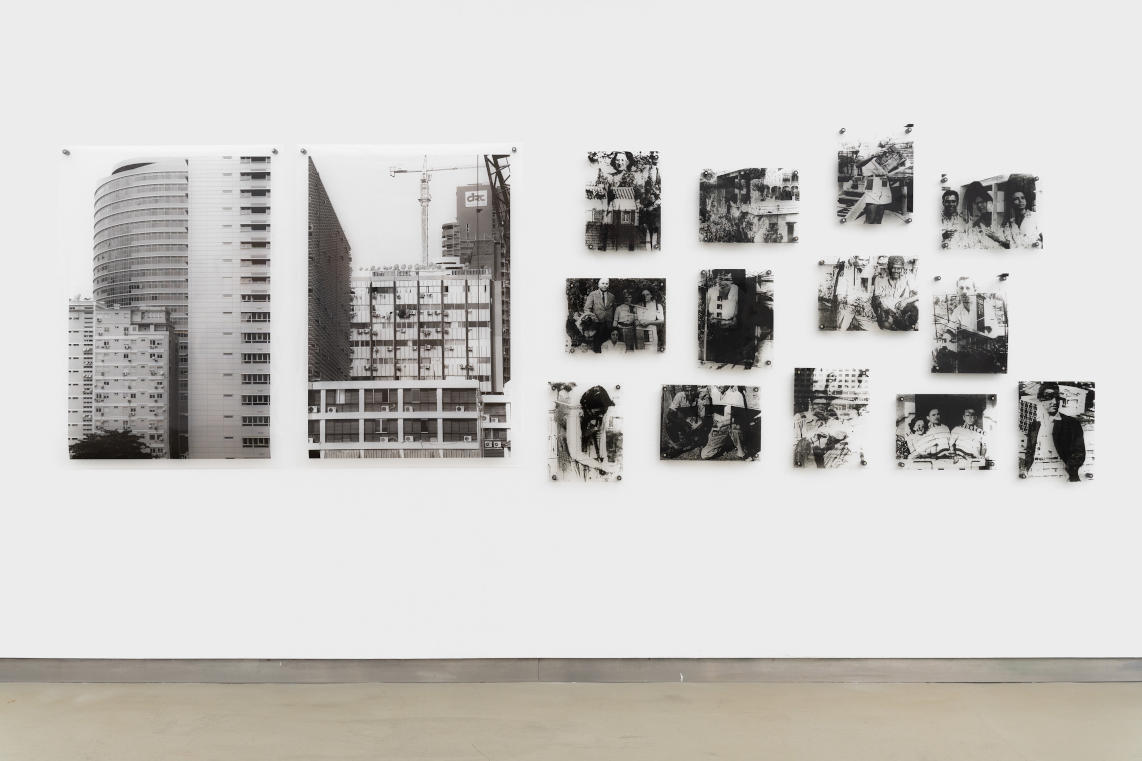Matt Mullican returns to Cristina Guerra Contemporary Art after 5 years, presenting a survey show that embraces the gallery’s space with the question WHAT DO THEY FEEL?, through colors, human being, life and dead.
What do you want to transmit with the series Language and Sign, 2018? It suggests organic landscapes with elements from the nature in a micro-scale (like the skin, the respiratory membrane, …) but at the same time it induces to the expression of a bigger scale, like an urban plan or a main scheme. What do you pretend with this binomial?
There are 8 green paintings that are parts of the body, the anatomy, but had been abstracted. The upper left part it’s an anatomy figure, on the right top there’s a city plan. It has to do with interface and how we comprehend the world. They’re abstract but figurative at the same time: it’s a system! You have the lungs and then the blood: The air feeds the blood and I describe that process. It’s like the airport when you get from flying into a car; it’s also a system.
The yellow diptych Untitled, 2018 shows an interior of an architectural space with two squares. It could be two exterior worlds inside a private space, one connected to the nature (green), the other to symbols and language (black and white). Why are these three realities in dialogue?
I have 5 worlds in my work: the color green represents the world as we live it; the world framed is represented by yellow, the language by Black and White, the subjective by Red and the world unframed by the culture by blue. Being yellow, that interior it’s a stage for the things to happen. It’s not an interior where someone lives in. It’s like in walking into a picture, in a virtual reality. Conceptually, I was going into the picture and I wanted three windows and a hallway, to complement that space.
The series Untitled (Dead Man) 1-4, 2018 are an abstraction of pictures from the American Civil War (1861 – 65) always with a yellow background. What do you want to transmit today, with the appeal to this 19th century war? Why is it related to the yellow color?
Dead Man comes from the series Doll and Dead Man, 1974. It’s an abstraction of images of dead man from Mathew Brady, a civil war photographer from the 19th century. I needed pictures of dead mans. Those are photographic; they have been digitalized and abstracted. The technique is the frottage (rubbing), the first form of producible media. The borders between the dead man and the landscape disappeared, it became a pattern, an overall pattern, but still photographic. It’s a dead opposed to Body and Head, 2018, which are two bodies alive.
The yellow color call the series Untitled Yellow Monster 27, 2018. Here, printed mixed media on canvas show pictures of random people. Why did you abandon the use of symbols in this series and chosen pictures instead? For what purpose?
Because they’re real, we understand them. Signs are not real but they’re still there, rubbed on the top, like an interface. Photos are represented through the signs. The whole series of Yellow Monster, has to do with how my ideas translate into contemporary cultural life.
This is really the subjective. The subjective sign is what is in front. The crying man, so mundane, looks like real, and then the ghosts. I took pictures straight off the Internet. They aren’t real but it’s the idea that the soul exists independently of the body. If I say figuration, the ghost could be the figuration of what we are in our bodies.
First the feeling of a men crying. Then the ghosts. A man crying is linked to the feeling; a ghost is an aberration or the soul: a meaning independent of the body. Who am I in my life? – Is the question. It’s about the relationship in between the body and who we are, how we look and how people see us.
In the beginning of the 70’s, you’ve started developing your artistic practice through hypnoses and created Glen, which has no gender, age or nation. It concerns the psyche of the situation rather than its physicality. Although, you introduced feelings and actions from the human being to this character, as we can see in That Person Lives. Is it a need to embody this subjective being?
That person comes from hypnosis, its abstract. That person has no gender, that person has no age, that person has no race. Is really the person that I see when I see you, when I see others. That person is the subject. Glen is that: it’s the suspension of the physically law. It’s an aspect of my work, in my own universe, my own language, and my signs. The reason I made signs was linked to the fact that when you see a sign, there is no word, you don’t have to say man. It’s pictorial, not phonetic. I totally disagree with the idea that all objects are words. I don’t consider we think in words, neither in pictures. I assume we think in feelings, and we define the thought, in a fast way. I think language and body are very connected. Glen is an avatar. Is someone to occupy and feel his feelings. We are so fast; we do it before we know we’ve done it. That person exists.
What my Eyes can See is the only piece presented in this exhibition that contains all the colors and categories on it. Is it a way to emphasize the importance of Glen, the subjective presence, and make it unquestionable, once it has on it all of the symbolic colors and meanings and that one can interpret from your work?
You see the rocks, lying on a bed’s platform. This is a human form but is abstracted. It has the colors and the categories of my work. I could have infinite colors there and I don’t. It’s the system being abstracted. Its all my eyes see in a way. What my eyes see is abstract, what my mind sees is little. That relationship is something I’m really interested in. The distance in between what my eyes see with what I see is fantastic. It’s the most recent piece of work in the exhibition, it was produced here. It’s a figure and a partner at the same time. It’s like Glen. I’m confusing the system. My work is always questionable.
The sculptures Sleeping Child and Body and Head suggest a direct connection to the human being we all know, or we all learnt to know. It calls childhood, physical body and consciousness. What do you pretend with these sculptures in a singular context and what does the exhibition gets with their presence?
The Body and Head is a matter of projecting life into the figure. I wanted to make it realistic, and then there would be no issue falling into the trap. It’s minimal enough: you’re aware of that projection, especially with the Sleeping Child. You say to yourself: I see a minimal figure and I’m aware of what I’m doing. The piece downstairs, the Body and Head is alive. When you say head it means consciousness. It’s the most reduced figurative form that I can come up with.
The exhibition WHAT DO THEY FEEL, from the artist Matt Mullican, can be visited in Cristina Guerra Contemporary Art until the 3rd November.


